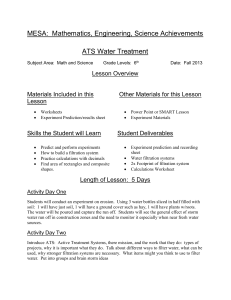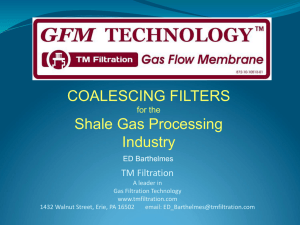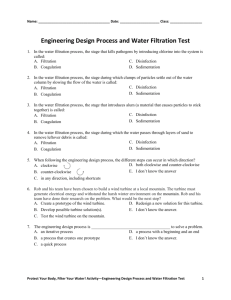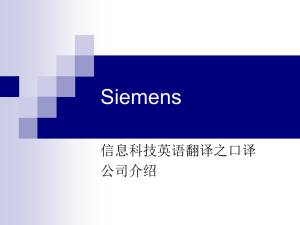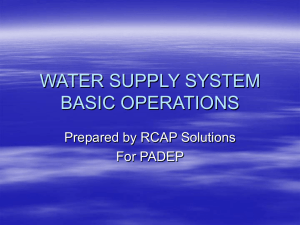subsurface_hydrogasmechanics
advertisement
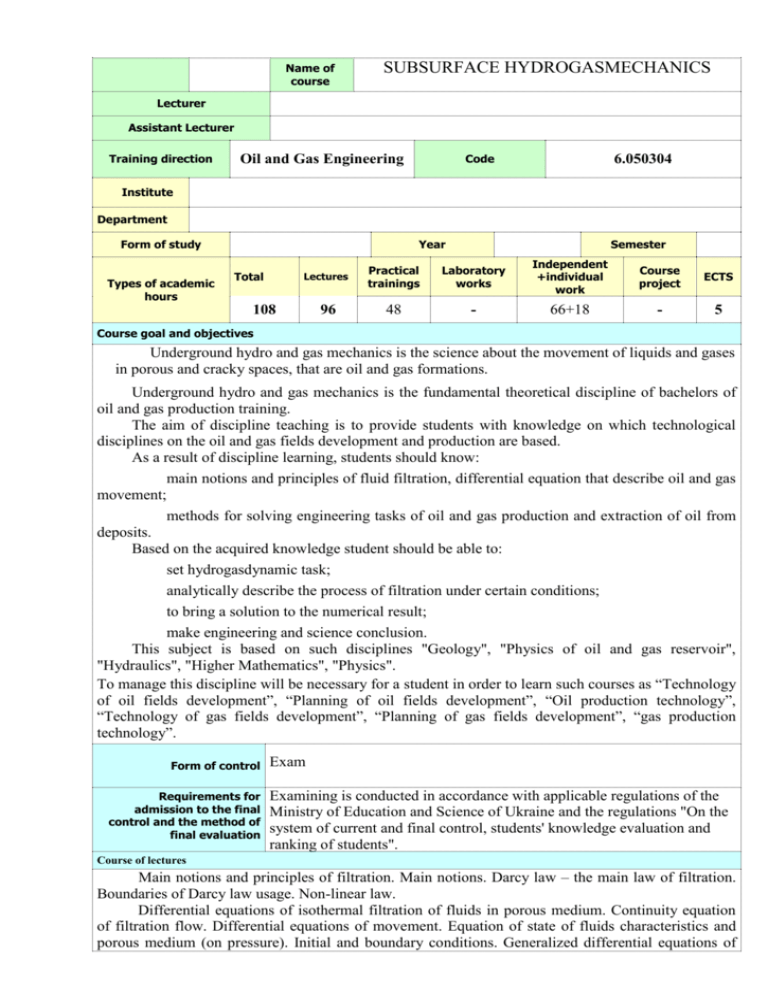
Name of course SUBSURFACE HYDROGASMECHANICS Lecturer Assistant Lecturer Training direction Code Oil and Gas Engineering 6.050304 Institute Department Form of study Types of academic hours Year Total Semester Lectures Practical trainings Laboratory works Independent +individual work Course project ECTS 96 48 - 66+18 - 5 108 Course goal and objectives Underground hydro and gas mechanics is the science about the movement of liquids and gases in porous and cracky spaces, that are oil and gas formations. - - Underground hydro and gas mechanics is the fundamental theoretical discipline of bachelors of oil and gas production training. The aim of discipline teaching is to provide students with knowledge on which technological disciplines on the oil and gas fields development and production are based. As a result of discipline learning, students should know: main notions and principles of fluid filtration, differential equation that describe oil and gas movement; methods for solving engineering tasks of oil and gas production and extraction of oil from deposits. Based on the acquired knowledge student should be able to: set hydrogasdynamic task; analytically describe the process of filtration under certain conditions; to bring a solution to the numerical result; make engineering and science conclusion. This subject is based on such disciplines "Geology", "Physics of oil and gas reservoir", "Hydraulics", "Higher Mathematics", "Physics". To manage this discipline will be necessary for a student in order to learn such courses as “Technology of oil fields development”, “Planning of oil fields development”, “Oil production technology”, “Technology of gas fields development”, “Planning of gas fields development”, “gas production technology”. Form of control Requirements for admission to the final control and the method of final evaluation Exam Examining is conducted in accordance with applicable regulations of the Ministry of Education and Science of Ukraine and the regulations "On the system of current and final control, students' knowledge evaluation and ranking of students". Course of lectures Main notions and principles of filtration. Main notions. Darcy law – the main law of filtration. Boundaries of Darcy law usage. Non-linear law. Differential equations of isothermal filtration of fluids in porous medium. Continuity equation of filtration flow. Differential equations of movement. Equation of state of fluids characteristics and porous medium (on pressure). Initial and boundary conditions. Generalized differential equations of elastic liquid and filtration according to the Darcy law in porous medium. Derivation of differential equations of incompressible fluid filtration according to the law of Darcy. Steady straight-parallel filtration according to Darcy law. Steady straight-radial filtration according to Darcy law. Steady filtration according to non-linear law. Steady filtration in heterogeneous stratum. Source and sink method. Principle and method of superposition. Method of solving tasks of inflow to the group of wells in the formation with remote external boundary.Method of sources and sinks mapping. Methods of complex potential. Connection between plane problem of filtration and the theory of complex variable function. Method of equivalent filtration resistances. Types of hydrodynamic imperfection and its consideration. Research of oil inflow to the imperfect wells in the degree of reservoir opening. Research of oil inflow to the imperfect wells in the manner of reservoir opening. Imperfection of both types. Analogy of steady filtration of compressible fluids with filtration of incompressible fluids of the porous reservoir. Straight-parallel filtration of ideal gas according to the Darcy law. Plane-parallel filtration of ideal gas by the law of Darcy. Plane-radial filtration of ideal gas by binomial law. Plane-radial filtration of real gas by the law of Darcy. Filtration of real gas according to non-linear law to perfect and imperfect wells. Steady filtration of elastic fluid in porous formation. Differential equation of piezoconductivity. Features of elastic mode. Straight-parallel filtration. Filtration of elastic fluid to the well. Method of superposition in the elastic mode tasks. Concept about The concept of approximate methods. Steady filtration of gas in porous formation. Derivation of differential equation of unsteady filtration of ideal gas in porous formation according to the law of Darcy (Leybenzon equation) Linearization of Leybenzon equation. Methods of solving the problems of gas filtration to the well. Method of superposition in the tasks of unsteady filtration. Solving the tasks of gas filtration by the equation of material balance. The principles of solving tasks of piston-likeliquids and gases displacement. Displacement of oil by water. Dynamical stability of displacement boundaries.Free-flow filtration of fluid in the reservoir. Cone-like formation of bottom water and upper gas. Fundamental theories of multiphase systems filtration in porous reservoirs.Differential equations of multiphase systems filtration. Generalized pattern of multiphase systems movement. Bakleya-Leverett model. Rapoport-Lis model. Masket-Meres model. Displacement of oil by solution of active impurity. The essence of the physical and chemical methods to increase oil extraction. The concept of active impurity. Differential equation of two-phase filtration with active impurity. Displacement of oil by the solution of active impurity. Steady flow of gas cut fluid. The program of studies (practical, laboratory, course projects) Practical studies : Problems solving for learning filtration laws. Usage of dimensional theory analysis for Darcy law and non-liner law making. Estimation of fluid and porous medium state parameters. Solving steady filtration of incompressible fluid in gallery math problems. Problems solving for steady filtration of incompressible fluid to well according to Darcy’s law and non-linear law. Problems solving for filtration in heterogeneous stratum. Problems solving for well interference. Problems solving using method of equivalent filtration resistance. Problems solving for influx in hydrodynamically imperfect well. Problems solving for unsteady filtration of elastic fluid in porous formation. Problems solving for gas filtration. Problems solving for oil displacement by water, dynamic stability of displacement boundary. Problems solving for fluid free filtration. Problems solving for gas-cut oil filtration.

